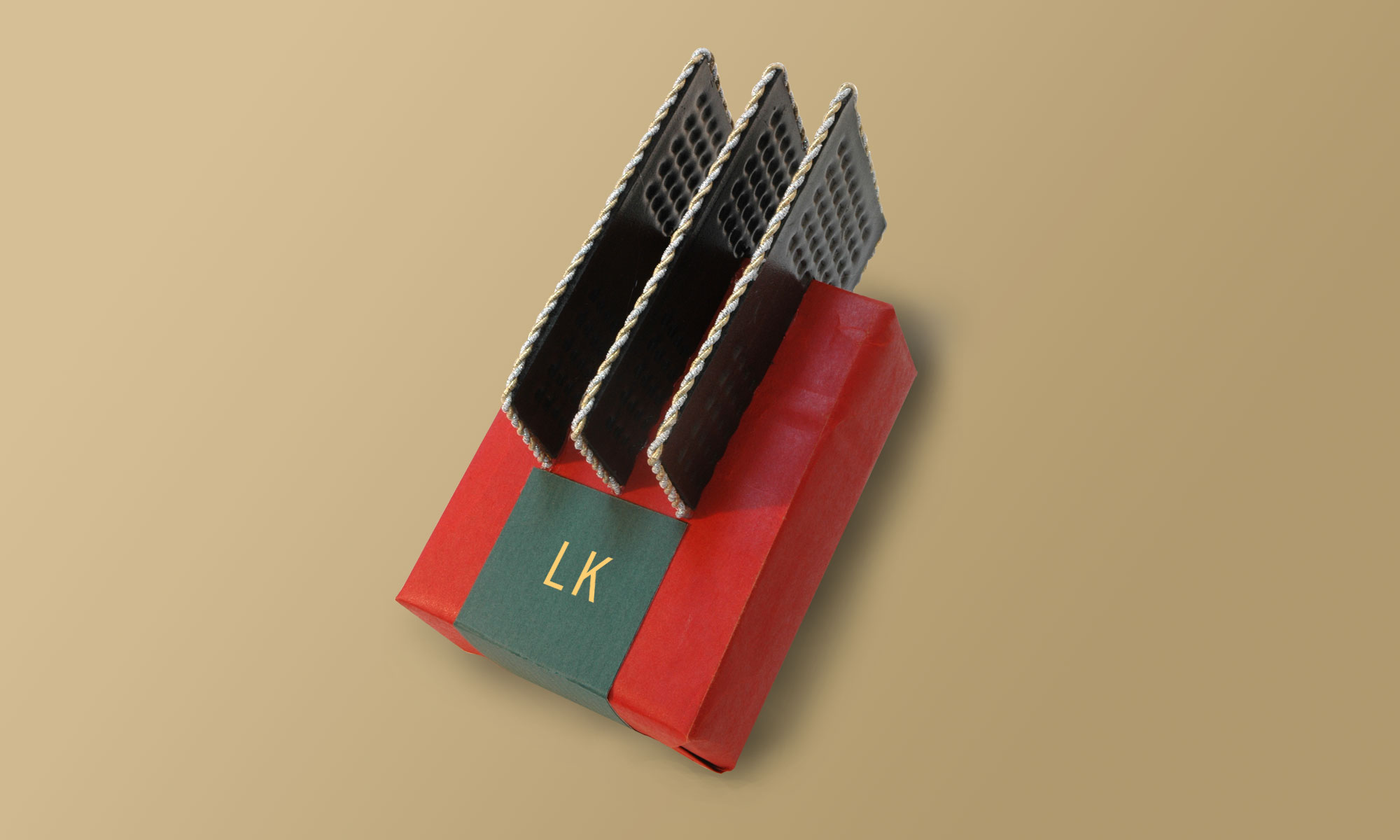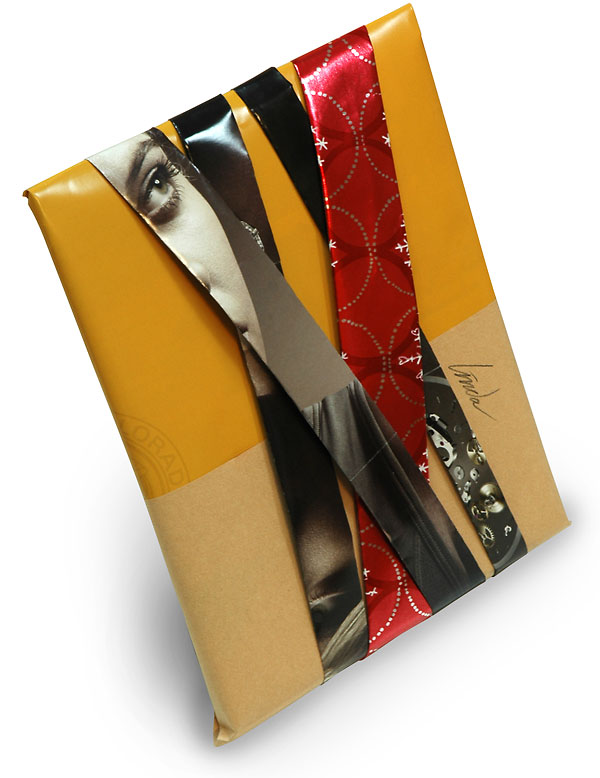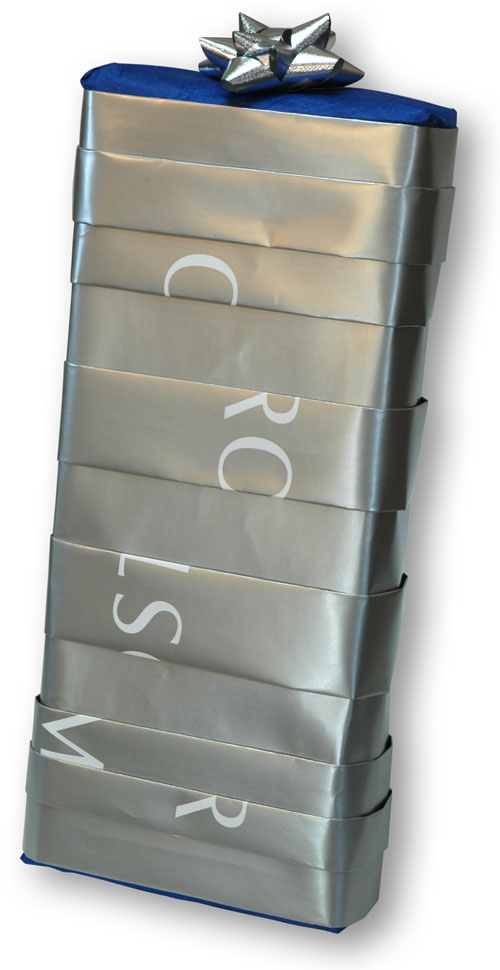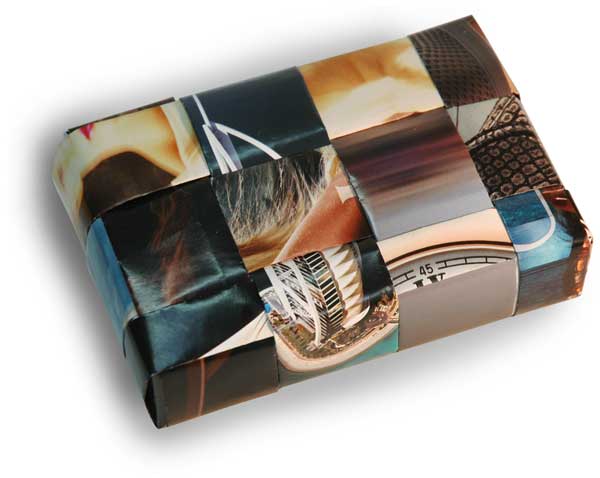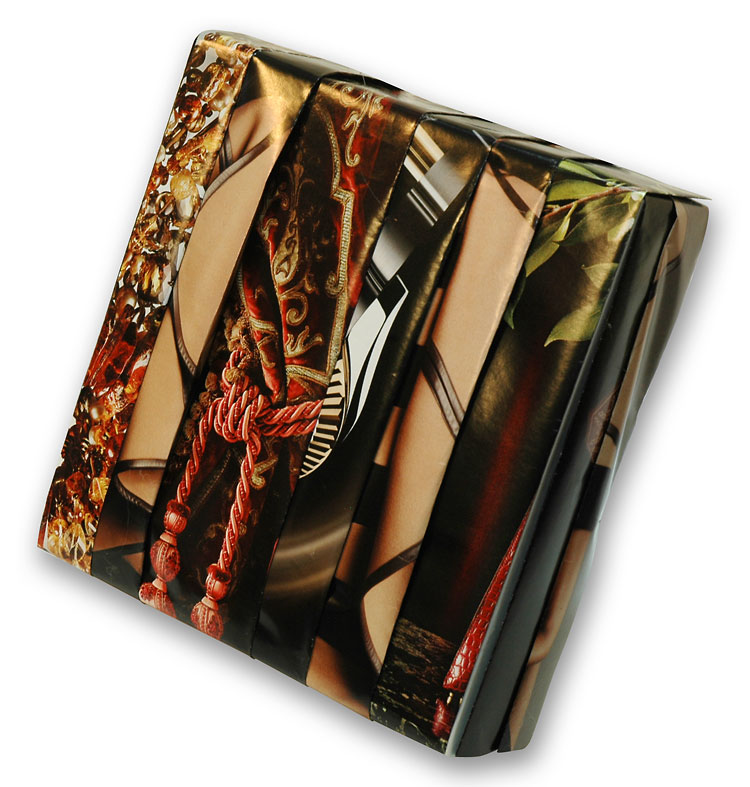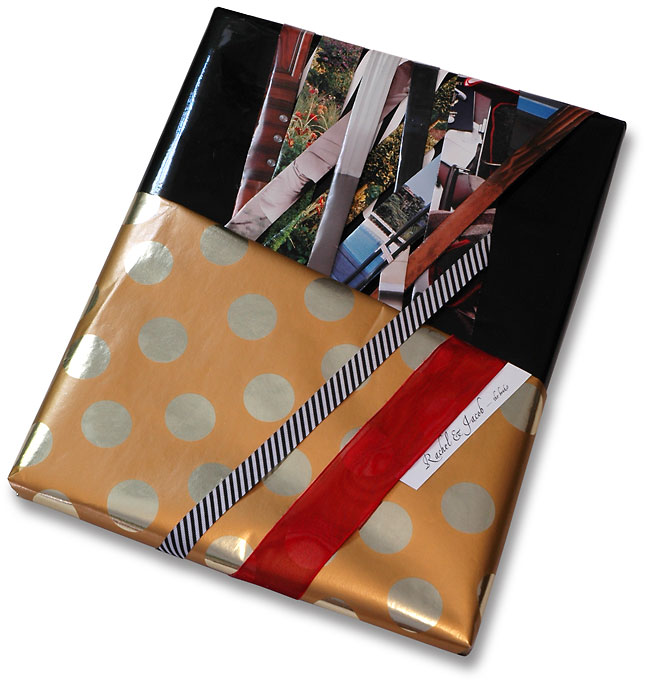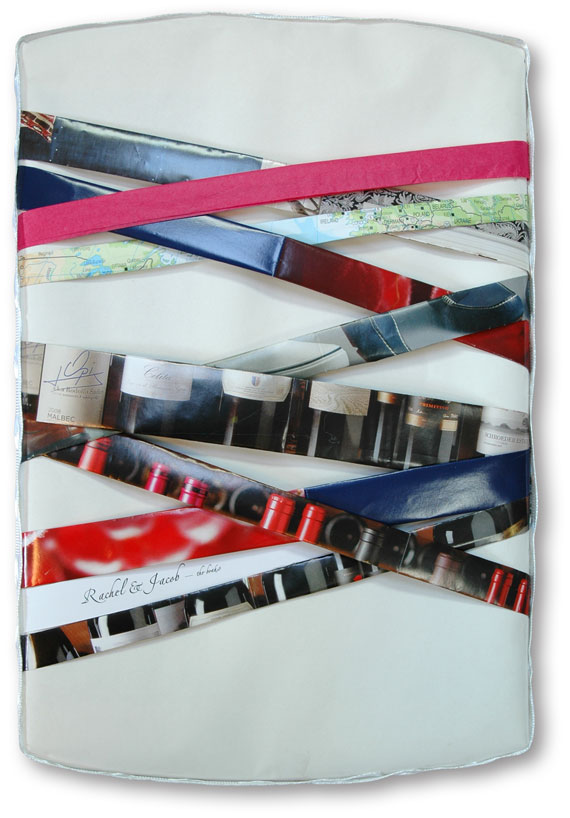
–
–
–
This is one of two wraps for Rachel and Jacob. The gift has curved edges on the short ends, and it is solid enough to wrap without a box. I gave it a quick white-paper wrap, and it turned out that the white paper was almost exactly the same width as the long edge. That meant that there was minimal paper overage for making properly folded and taped ends. But typically-folded ends would have been a wrinkly mess on the curves. Freed from that problem by the paper’s width, I was still left me with the challenge of covering the curved ends.
I decided on applying an edge-wrap of ribbon, choosing a shiny, patterned white ribbon for it’s wedding-dress feel. I put the ribbon aside for later application, and moved on to main wrapping tactics.
I disassembled a magazine and some mailers and made a bunch of printed bands, each with two folds, which gives my wrapping bands their slightly pneumatic shape and softened edges. One of the bands is folded tissue.
This gift was large enough that typical pages of magazines are too shorti. I had to use the wide paper of the folded-poster mailers for most of the bands. When those ran out I began to glue regular magazine page bands together, hiding the join by the way I positioned the band under a previously-positioned band.
Laying out the bands is an improvisational exercise. One after another, starting closer to the center, you keep on adding new bands. A bit of weaving is involved. Eventually you begin to see a satisfying arrangement, and that is when you should start to think about stopping.
Once the band wrapping was done it was time to glue the ribbon all the way around the edge, covering up the end wraps.
I printed out a label, and snugged it behind two bands.
